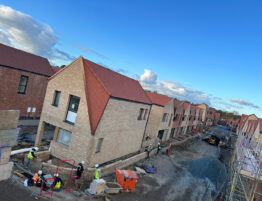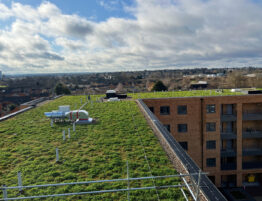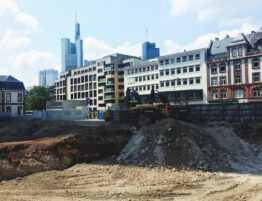
New rules that came into play this week mean that developers in England now have to deliver 10% Biodiversity Net Gain when building new housing, industrial or commercial developments.
This makes England the first country in the world to make Biodiversity Net Gain a legal requirement so take a look at this week’s blog to find out more about what this means and how it will be implemented.
What is Biodiversity Net Gain?
Introduced through the Environmental Act, the principles of Biodiversity Net Gain (BNG) are part of a wider drive to halt species decline in England by 2030.
BNG basically requires developments to avoid harm to nature, but where that is unavoidable, the developers must create new habitats or enhance existing ones either within the site itself or by investing in nature sites elsewhere. Whichever route is implemented, the aim of the new legislation is to ensure there is at least 10% more nature after a development than what there was before. Many housing developers have already been successfully achieving this but from Monday 12th February 2024, it has become mandatory.
To support the legislation, £10.6 million of funding is being committed to help Local Planning Authorities integrate BNG at a local level, for instance by recruiting and expanding ecology teams, investing in green jobs and increasing capacity to create new wildlife-rich habitats alongside developments.
How will it work?
- Biodiversity Net Gain will apply to new planning applications, rather than existing ones.
- From 12th February, BNG will apply to applications for major developments only. It will then be implemented for small sites (between 1 and 9 dwellings) from 2nd April 2024 with a further roll-out for Nationally Significant Infrastructure Projects expected in late 2025.
- BNG is measured through a statutory metric tool which calculates how many biodiversity units a habitat contains before development, using this to determine what is needed to provide at least a 10% increase.
- BNG can be achieved through on-site units, off-site units, or through statutory biodiversity credits. (See below for further explanation of how these forms of implementation differ).
- BNG seeks to provide lasting benefits for the environment and so there is also a requirement for habitats to be well-managed for the long-term. Significant on-site and all off-site gains will need a legal agreement with a responsible body or local authority to monitor the habitat improvements over the 30-year period.
- Natural England has also created a Habitat Management and Monitoring Plan template to support management.
On-site, off-site or BNG credits?
- Biodiversity Net Gain will prioritise on-site nature development to deliver the maximum benefits for people and nature. This involves developers creating new habitats or enhancing existing habitats on the development site.
- If this is not possible, developers can buy off-site biodiversity units from landowners via a private market. Landowners may include private organisations, farmers, local authorities and NGOs. Off-site projects will be tracked and monitored through a digital register maintained by Natural England.
- After both on-site and off-site BNG have been considered, as a last resort, developers will be able to purchase statutory biodiversity credits from the government, which will be reinvested in habitat projects across the nation. This will help to ensure that delays in the planning system can be avoided.
Natural England Chair, Tony Juniper, said:
“If we are to halt and reverse the decline of wildlife in line with our ambitious national targets then it will be vital to ensure that new habitats are created to compensate those being lost to developments.
“Biodiversity Net Gain is a key moment on our path to halting the decline of nature, enabling developers to make a positive contribution through creating new habitats, increasing access to green spaces, and building healthy and resilient places for people to live and work.
David Mooney, CEO of London Wildlife Trust, commented:
“We need to take this opportunity and make sure Biodiversity Net Gain can help towards nature’s recovery. Central government, local authorities, developers, and nature charities like The Wildlife Trusts must work together to bring nature to our doorsteps and wildlife to our windows.”
What do you think about this new requirement for at least 10% Biodiversity Net Gain on developments? Let us know in the comments on our Facebook or LinkedIn pages.
14.02.2024
Feature image: ponsulak/Shutterstock.com








